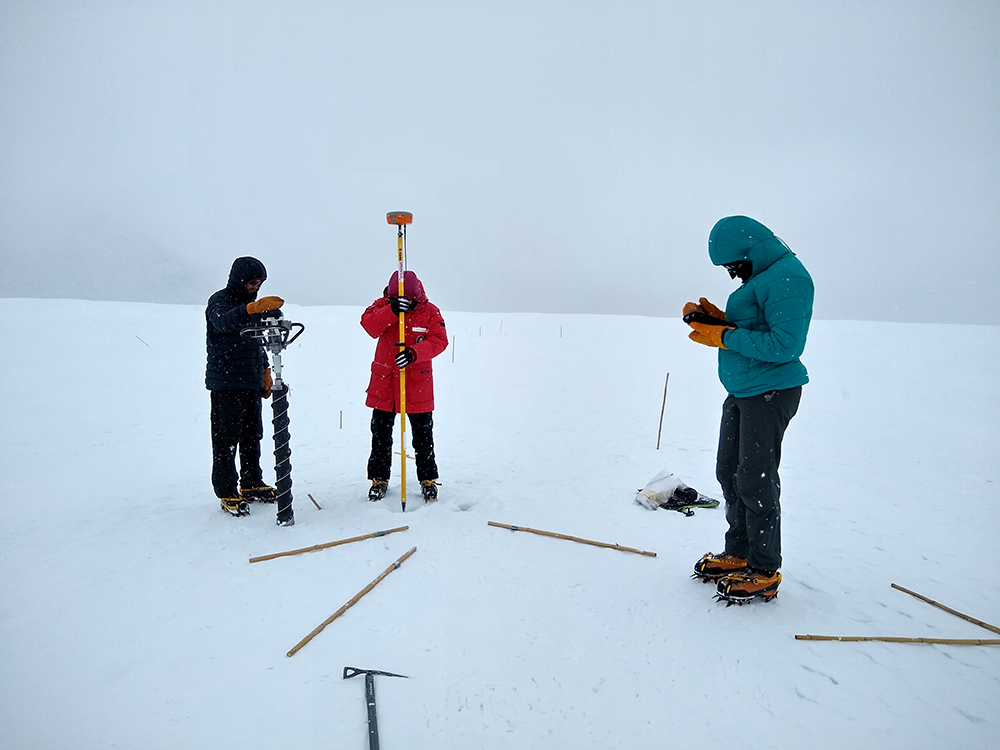Studying a Moving Target: Tracking Cryoconite Holes on Canada Glacier

Lara Vimercati, a PhD candidate at CU Boulder, locates an experimental hole on Canada Glacier using a Septentrio Altus APS3G GNSS receiver, while Adam Solon, a PhD student at CU, waits with a Sipre Drill to drill out the cryoconite hole and Kaelin Cawley, a research scientist at the National Ecological Observatory Network (NEON), documents the field visit. (Photo/Pacifica Sommers, CU Boulder)
Overview
Researchers from University of Colorado and Portland State University are using cryoconite holes on Canada Glacier, located in the McMurdo Dry Valleys, to study microbial communities in their natural environment. Cryoconite holes start as small, dirt-filled depressions on the glacier surface that melt into the ice, creating a small pool of water that freezes over. Within the water, microbial life thrive in summer despite being isolated from the atmosphere and frozen every winter. Over the course of three field seasons, the team sampled natural cryoconite holes and created their own experimental cryo holes to ask a few very specific questions, including:
- Which environmental factors are associated with diverse or productive ecosystems in cryo holes?
- How much does the diversity of the first community to arrive affect diversity and production?
- How much does it matter which species arrive first?
During the 2017-18 Antarctic field season, the researchers created 350 experimental holes by drilling a few centimeters into the ice. They placed a slug of sediment mixed with a combination of black and orange algae mats in the new depressions
The team also used high precision GPS to determine the location of the holes. At that site, the Canada Glacier is moving ~1.8 cm/day. Relocating the holes using RTK (real time kinematic) GPS was crucial to the success of the project, especially with the abnormal amounts of snowfall during the two summer field seasons that blanketed the ice surface. By November 2018, the new calculated positions of the holes were ~7m further down glacier. Using UNAVCO’s precision GPS, the cryo team was able to find and sample their holes, completing a successful final field season. They are now processing the samples to answer the questions above.
Project Information
- Principal Investigator(s): Steve Schmidt, CU Boulder and Andrew Fountain, Portland State University
- UNAVCO Engineer(s): Thomas Nylen, Spencer Niebuhr and Brendan Hodge
- Dates: Nov 2016 to Jan 2019
- Location: Canada Glacier, Taylor Valley, Antarctica (map)
- Funding Source: National Science Foundation Polar Programs Award 1443578
Related Links
Written by:
- Thomas Nylen
- Posted: 26 February 2019
- Last updated: 4 June 2021
- Tags: GPS/GNSS, polar, project highlights



